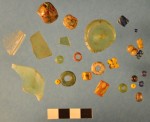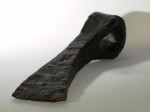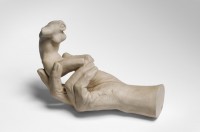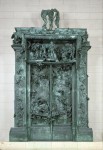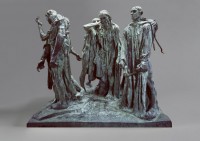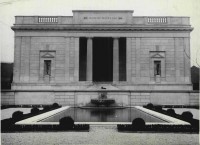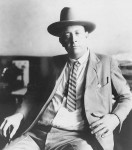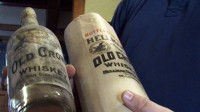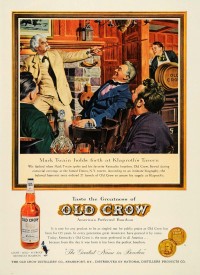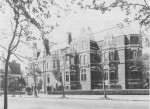The Daughter of Dawn, an 80-minute feature film, was shot in July of 1920 in the Wichita Mountains Wildlife Refuge near Lawton, southwest Oklahoma. It was unique in the annals of silent film (or talkies, for that matter) for having a cast of 300 Comanches and Kiowas who brought their own clothes, horses, tipis, everyday props and told one of their traditional stories from when the United States Cavalry wasn’t even a gleam in the British cavalry’s eye. It was a love story, a four-person star-crossed romance that ends with the two main characters together happily ever after. There are two buffalo hunt sequences with actual herds of buffalo being chased down by hunters on bareback just as they had done on the Plains 50 years earlier.
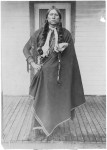 The male lead was played by White Parker; another featured female role was played by Wanada Parker. They were the son and daughter of the powerful Comanche chief Quanah Parker, the last of the free Plains Quahadi Comanche warriors. He never lost a battle to United States forces, but, his people sick and starving, he surrendered at Fort Sill in 1875. Quanah was the son of Comanche chief Peta Nocona and Cynthia Ann Parker, the daughter of Euro-American settlers who had grown up in the tribe after she was kidnapped as a child by the Comanches who killed her parents. She was the model for Stands With a Fist in Dances with Wolves.
The male lead was played by White Parker; another featured female role was played by Wanada Parker. They were the son and daughter of the powerful Comanche chief Quanah Parker, the last of the free Plains Quahadi Comanche warriors. He never lost a battle to United States forces, but, his people sick and starving, he surrendered at Fort Sill in 1875. Quanah was the son of Comanche chief Peta Nocona and Cynthia Ann Parker, the daughter of Euro-American settlers who had grown up in the tribe after she was kidnapped as a child by the Comanches who killed her parents. She was the model for Stands With a Fist in Dances with Wolves.
Written and directed by Norbert Myles, an opinionated, hot-tempered West Virginian whose conflicts with studio bigwigs led him to seek work outside of Hollywood, the movie was produced by the fledgling Texas Film Company whose founder, Richard E. Banks, had worked and lived with Indians for 25 years. It was Banks who ensured the script told an authentic story from the perspective of the Plains peoples instead of the already clichéd cowboys-vs.-Indians shoot-em-ups.
In one scene a young buffalo bumps into one of the riders. The Kiowa is knocked from his horse to the rocky terrain of the Wichita Mountains area.
“The rider just gets back up, and goes on,” said Matt Reed, a curator at the Oklahoma Museum of History. “You’re like, ‘Wow, you’re in a breechcloth and moccasins and riding at full speed you just fell from a horse and it didn’t even faze you.’ These are some tough, tough people.”
According to the October 17, 1920, issue of the influential industry trade magazine Motion Picture News, an exclusive preview of The Daughter of Dawn had been shown earlier that week at the College Theater in Los Angeles to great critical acclaim. It was an “original and breath-taking adventure” which had “hardly been duplicated before.” Notwithstanding the fine notices, it doesn’t appear to have gone much further than that. There’s no evidence that the movie was ever nationally distributed.
Many silent pictures, even the ones that were immensely popular, were lost over the years, and it seemed that The Daughter of Dawn had suffered that sad fate. The reservation tribes people knew about the movie from word of mouth; there were 36 production stills in the Museum of the Western Prairie and a complete script in the Library of Congress, but that was it.
In 2005, Brian Hearn, the film curator at the Oklahoma City Museum of Art, received a phone call from a private investigator offering to sell him a silver nitrate film that he had received as payment from a client. The PI hadn’t watched it, but he thought it was The Daughter of Dawn. The museum did not have a film collection at that time, so Hearn enlisted the aid of the Oklahoma Historical Society. After copious fundraising, the OHS was able to purchase the reels and restore them so this priceless record of Comanche and Kiowa history, Oklahoma history and early film history could get the audience it never had a chance to get in 1920.
The Daughter of Dawn was screened for the first time in almost a century last month at the deadCENTER Film Festival in Oklahoma City. Future screenings haven’t been scheduled yet, but keep an eye on the website for news. The Oklahoma Historical Society also plans to release the movie on DVD and Blu-Ray, complete with features on the history of the film and one particularly important artifact therefrom.
As staff visited with Kiowa and Comanche friends who identified people in the movie and described some of the objects brought from their homes to the set, one object in particular stood out. It was a tepee with bold horizontal stripes positioned at a key spot in every scene. The Kiowas said it was an especially significant tepee that disappeared in 1928.
Just a few years ago, while one of their curators was going through collections at the Oklahoma History Center, he pulled a canvas tepee off the shelf, unrolled it, and recognized it as the tepee in the movie, Blackburn said.
“If he had never seen ‘Daughter of Dawn,’ the tepee might still be undiscovered,” Blackburn said. “And next year, the tepee will be used in a new museum exhibit.”
 That tipi was given to the Kiowas by the Cheyenne in the 1830s as a symbol of peace between the peoples. In 1916, new images were painted on it by artists Silverhorn and Steven Mopope, the latter one of the famous Kiowa Five, a team of artists who became internationally known for their virtuoso skills in the traditional arts. You can see the tipi at the Oklahoma Historical Society in the video at the top of the linked article.
That tipi was given to the Kiowas by the Cheyenne in the 1830s as a symbol of peace between the peoples. In 1916, new images were painted on it by artists Silverhorn and Steven Mopope, the latter one of the famous Kiowa Five, a team of artists who became internationally known for their virtuoso skills in the traditional arts. You can see the tipi at the Oklahoma Historical Society in the video at the top of the linked article.
Here are the first ten minutes of The Daughter of Dawn. Dawn is played by Esther LeBarre. Her father the Chief is played by Hunting Horse. Her lover, White, is played by White Parker. Wolf, the man who loves her unrequited, is played by Jack Sankeydoty. Red Wing, who loves Wolf unrequited, is played by Wanada Parker. The score is by controversial Comanche symphonic composer Dr. David Yeagley.
[youtube=http://www.youtube.com/watch?v=pVU3L39cU8s&w=430]

